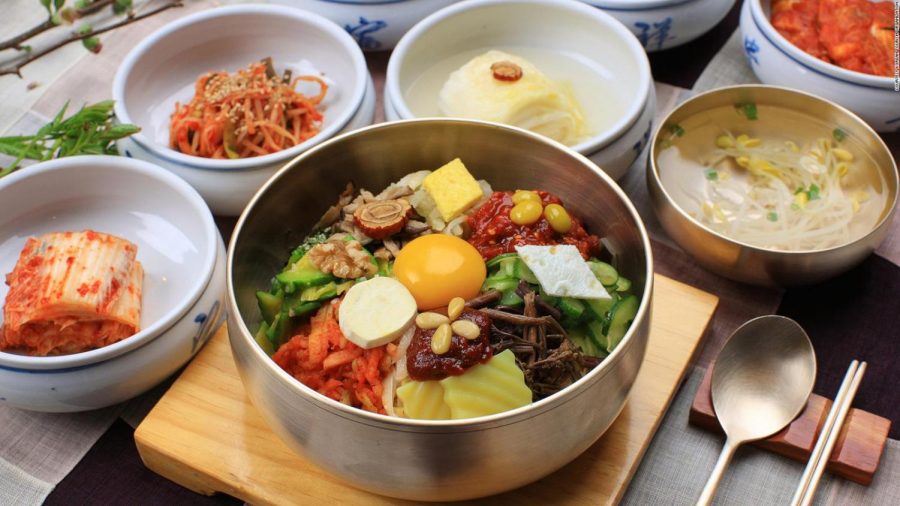Five Must-Try Korean Foods
August 30, 2021
Saugus High School is a very diverse campus with students from various cultures. With culture, there is cultural food, some of which many students have never tried. If you have never tried Korean food or enjoy it on a special occasion, the following is a list of five must-try Korean foods:
- Kimchi
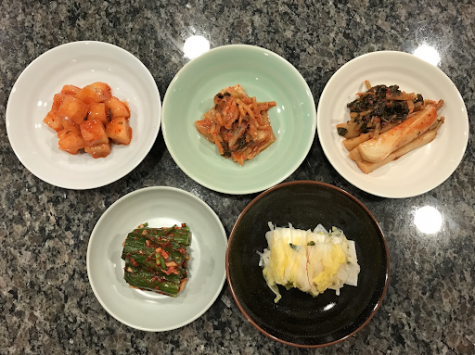
Courtesy of Erica Park
Kimchi is one of the most well-known national dishes of Korea. When foreigners imagine kimchi, they often think of Baechu/Mak Kimchi. In actuality, kimchi is the term for several dishes that use a similar process when making them. The process of making kimchi includes the brining of the main ingredient, and then fermenting them. Here is a step by step explanation on how to make baechu kimchi. Throughout time, over 100 varieties of kimchi have been developed, each having its own versatility and flavor. Some of the varieties are kkakdugi, baek kimchi, gat kimchi, and many more. Kimchi is a staple side dish in Korean cuisine, it can even be called a given to have kimchi as one. It is often spicy to a degree, depending on the variety. One of the few kimchi that aren’t spicy at all is baek kimchi. Baek kimchi is made in the similar process as every other kimchi varieties but without spicy pepper flakes. Despite the lack of spiciness, baek kimchi is just as flavorful as any other as it includes radishes, chives, garlic, and even fruit such as the Korean pear. Kimchi is highly recommended to be paired with any of the following foods in this article.
2) Gimbap/Kimbap
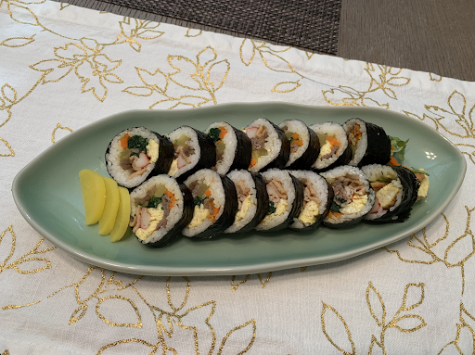
Gimbap, also referred to as Kimbap, is a very flexible dish. It is not a very complex dish unlike streak so gimbap can be eaten at any time of the day. The main ingredients are gim, which is rolled sheets of seaweed, and rice. Gimbap is usually made with sliced carrot, pickled radish, thin bits of egg rolls, sliced cucumbers, and beef. However, that does not mean those ingredients are required. Gimbap can be made without beef at all, or exclude cucumbers, some even substitute the meat with tuna, and various other replacements. It can accompany other side dishes such as kimchi, eggrolls, or simply be eaten by itself. Since gimbap is such an amenable dish, it can always be altered to the consumer’s liking.
If you want to make gimbap for yourself, or for your family, here is maangchi’s recipe!3) Tteokguk (ttŏkkuk)
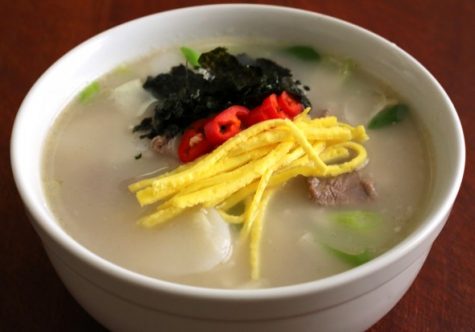
Tteokguk is a rice cake soup-broth dish that is often consumed during the Korean New Year (Seollal), a holiday which commemorates the first day of the Korean calendar. The rice cake is sliced into thin, bite-sized pieces as it is accompanied by garnish such as julienned egg, marinated meat, and sprinkles of gim or dried seaweed. An old wives tale is that when a person eats a bowl of tteokguk on the day of the Korean New Year, they gain a year of age. Since tteokguk is a main dish, it is often presented with several side dishes; one of the most popular being kimchi. Tteokguk can be eaten with a spoon because it’s rice cakes are chewy, but easy to eat, making it an enjoyable dish for many. If you’re looking for a dish that feels like it’s healing your body with its warmth, you can make it yourself with maangchi’s recipe to tteokguk.
4) Bulgogi
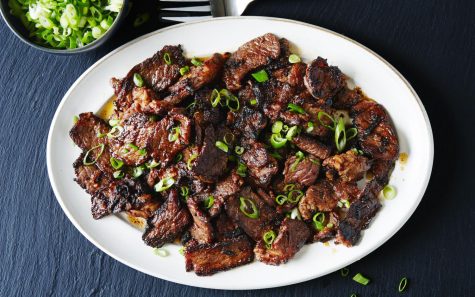
Bulgogi is marinated grilled beef, often served in Korean barbeque restaurants. When making bulgogi, slices of sirloin or other prime cuts of meat are used. Bulgogi is often considered a heavy meal, usually eaten during lunch or dinner with rice, and a couple side dishes like kimchi. There are two variants of bulgogi, one is with the broth while the other is without. In the end, this is not a huge difference but it is still nice to have the choice to choose a variant that suits the consumer of this meal. People usually eat bulgogi with chopsticks but if chopsticks are too difficult, forks are perfectly fine. Side dishes can be variants of kimchi, marinated spinach, eggrolls, and more. Here is the recipe for bulgogi.
5) Bibim Guksu (Spicy Cold Noodles)
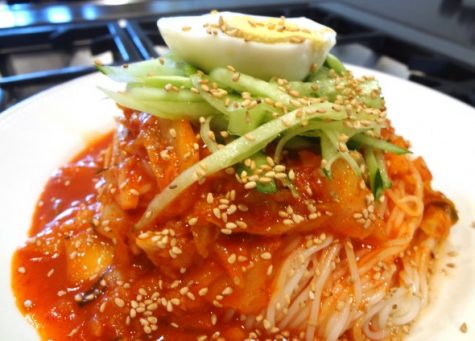
When there is rice and noodles in this dish, unlike spicy Korean Ramyeon or commonly called Ramen, Bibim Noodles are cold. There is a non-spicy variant of this dish called Naengmyeon. If something plain or less spicy fits your palette better, try Naengmyeon instead. For this dish, whatever topping can be added, or none at all. Most restaurants include a slice of boiled egg to accompany the spiciness. If you enjoy a kick to your taste buds on a hot summer day, you can make it for yourself with maangchi’s recipe for bibim-guksu.

